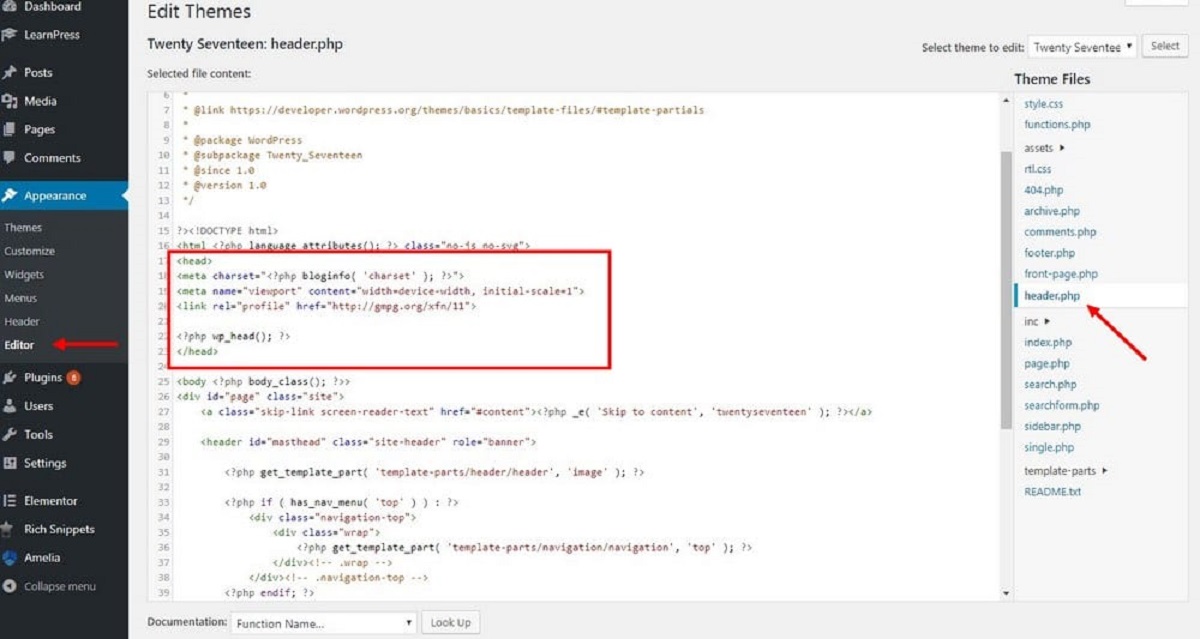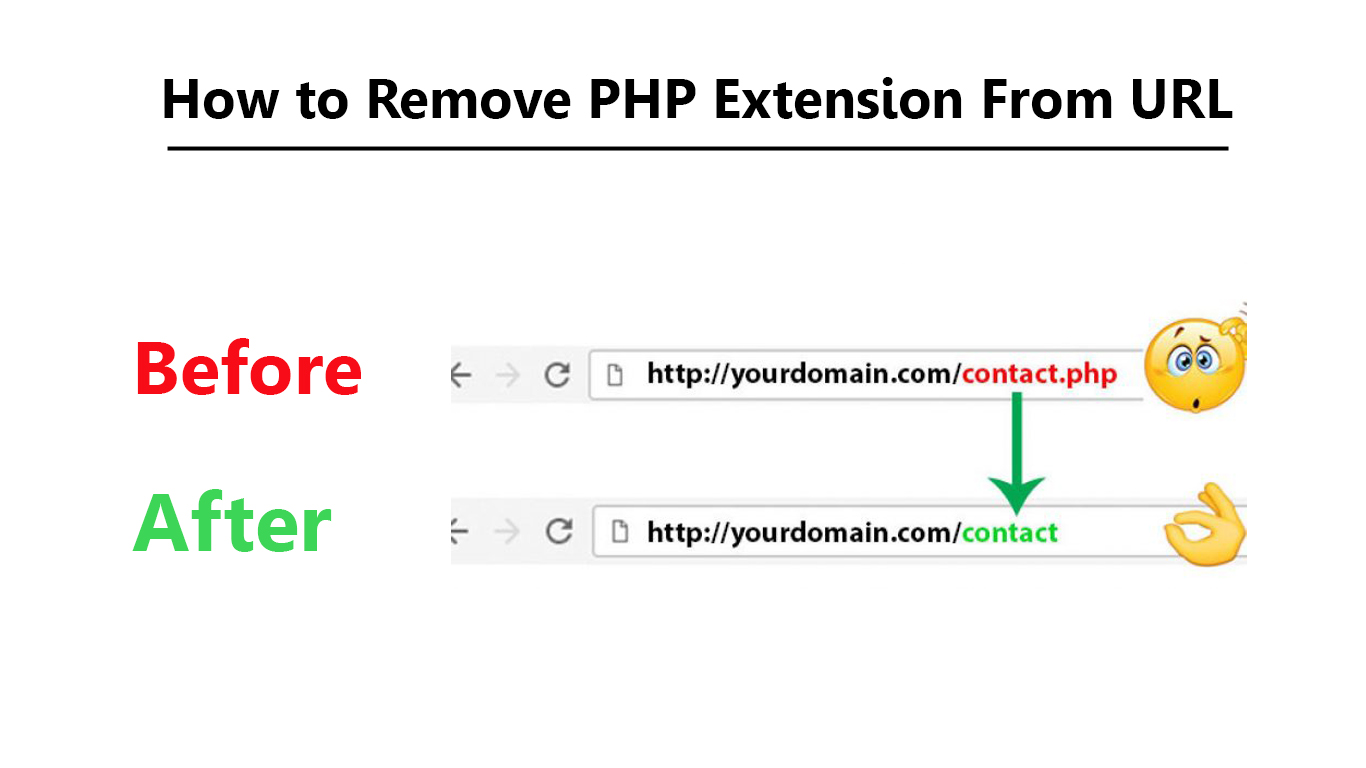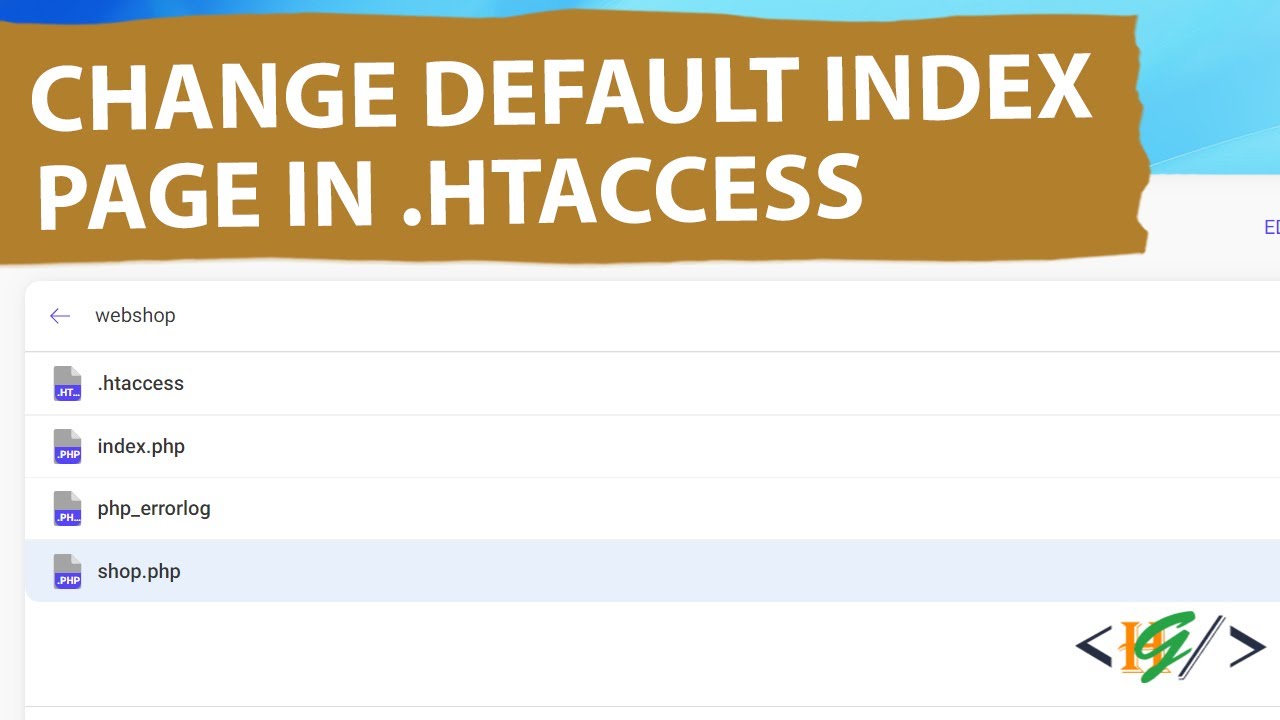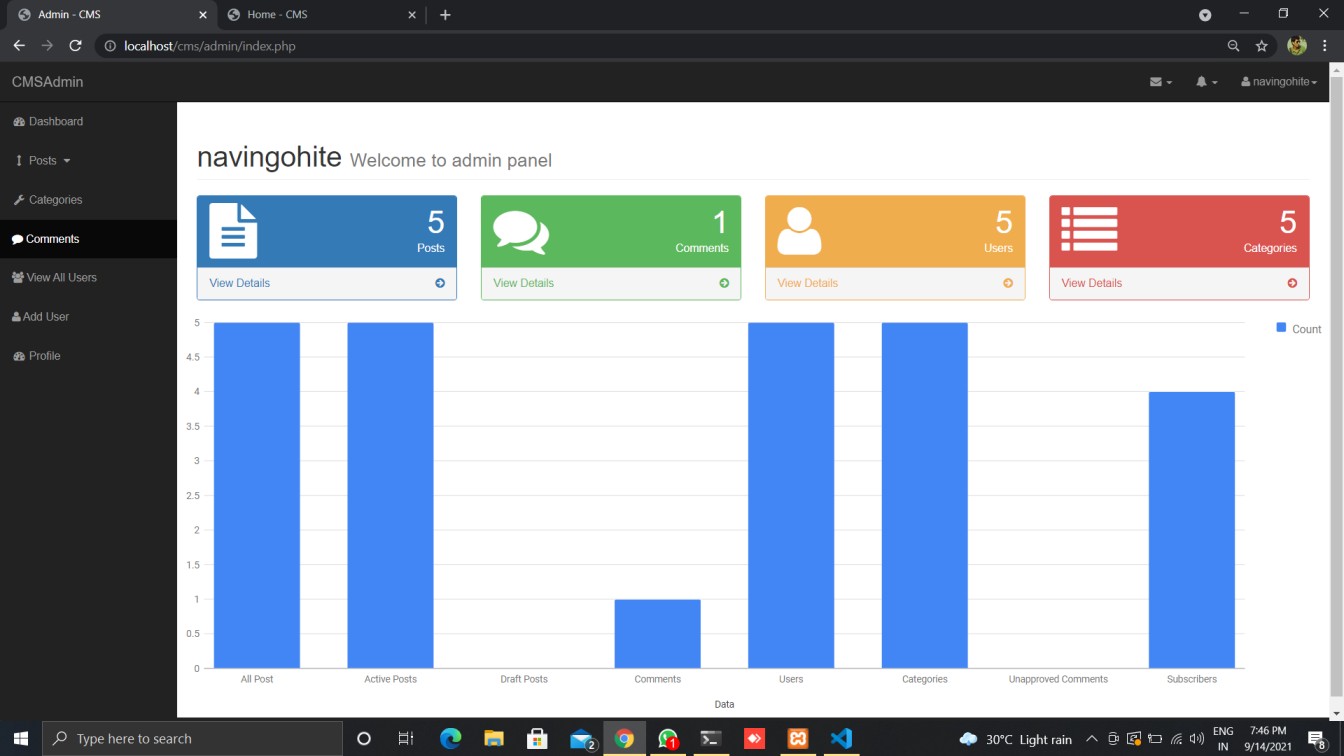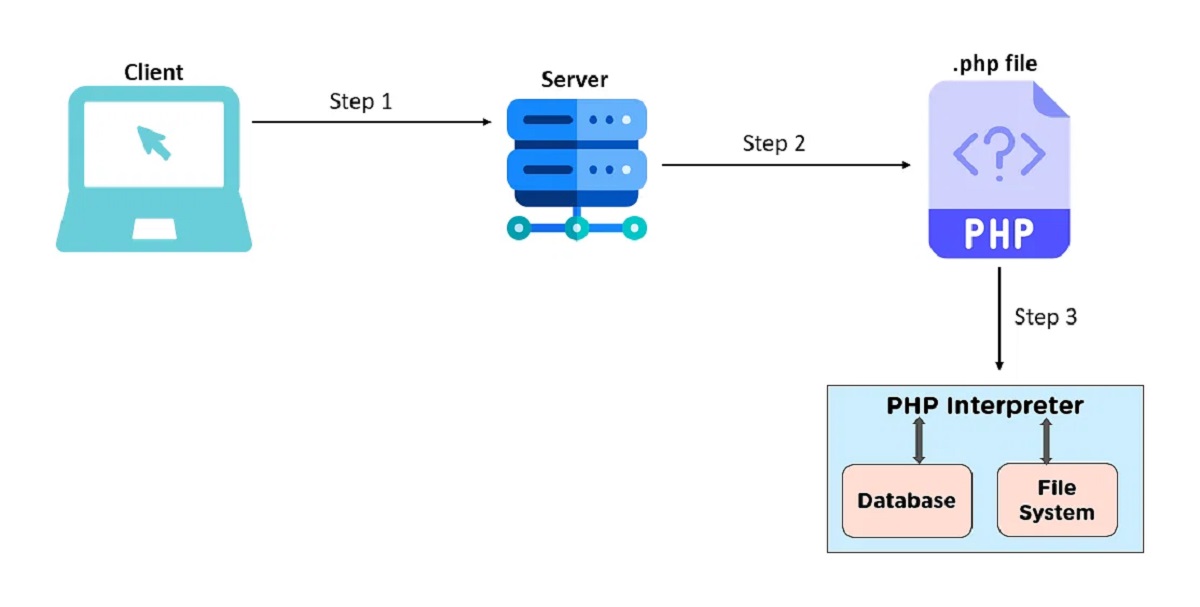Introduction
In today’s digital age, search engines have become an integral part of our online experience. Whether we are looking for information, services, or products, search engines help us find relevant results quickly and efficiently. You may be wondering, what does it take to create a search engine? The answer lies in the power of PHP, a popular scripting language used for web development.
PHP (Hypertext Preprocessor) offers a wide range of functionalities that make it ideal for building search engines. From handling form submissions to database management, PHP provides the necessary tools to create a robust and efficient search engine from scratch. In this article, we will guide you through the process of building a search engine using PHP.
Whether you’re a web developer looking to expand your skillset or a curious individual interested in how search engines work, this tutorial will equip you with the knowledge and skills to bring your search engine vision to life. We will cover the essential steps involved in setting up the database, creating the HTML form, handling form submissions, indexing web pages, and performing searches on the index. By the end of this tutorial, you will have a solid understanding of how search engines function and be able to develop your own custom search engine using PHP.
Before we dive into the technical details, it’s important to note that building a full-fledged search engine like Google or Bing is a complex task that requires a significant amount of resources and expertise. The purpose of this tutorial is to provide you with a basic understanding of the fundamental concepts and techniques used in search engine development.
So, if you are ready to embark on this exciting journey of creating a search engine using PHP, let’s get started!
What is a Search Engine?
In the vast ocean of the internet, search engines act as the guiding lighthouses that help users navigate through the endless waves of information. A search engine is a powerful software application that enables users to search for specific content or information on the internet. It does this by crawling, indexing, and ranking web pages based on their relevance to the user’s query.
The primary function of a search engine is to retrieve and display the most relevant results for a given search query. When a user enters a search term or phrase, the search engine analyzes its vast index of web pages and returns a list of results that best match the query. By employing complex algorithms and ranking factors, search engines strive to deliver the most accurate and satisfactory results to the user.
Under the hood, the search engine’s journey begins with “crawling.” Crawlers, also known as bots or spiders, systematically traverse the web, following links from one website to another. They collect information about each web page, including its content, structure, and links, and store this data in a vast database known as an index.
Once a web page is successfully crawled and added to the index, it becomes eligible to appear in search engine results pages (SERPs). When a user makes a search query, the search engine retrieves relevant results from the index and displays them in a hierarchical order. The ranking of these results is determined by a wide range of factors, such as keyword relevance, backlinks, user engagement metrics, and website authority.
Search engines have revolutionized the way we access and consume information, providing us with instant access to a wealth of knowledge. They have become an indispensable tool for research, decision-making, and staying up to date with the ever-evolving digital landscape. With their ability to process vast amounts of data and present it in a user-friendly manner, search engines have transformed the way we interact with the internet.
Now that we have a basic understanding of what a search engine is and how it functions, in the next section, we will explore why building a search engine using PHP can be advantageous.
Why Make a Search Engine Using PHP?
PHP has established itself as one of the most popular server-side scripting languages for web development. Its versatility, ease of use, and extensive community support make it an excellent choice for building a search engine. Here are some compelling reasons why you should consider using PHP for search engine development.
1. Wide Availability: PHP is an open-source language, meaning it is freely available and supported by a large community of developers worldwide. This availability ensures that you can easily find resources, tutorials, and documentation to assist you in building your search engine.
2. Web Development Capabilities: PHP is specifically designed for web development, making it well-suited for tasks like creating HTML forms, handling user input, and managing databases. Its rich set of built-in functions and libraries simplifies the development process, allowing you to focus on the core functionalities of the search engine.
3. Database Integration: PHP offers seamless integration with popular databases such as MySQL and PostgreSQL. This enables you to efficiently store and retrieve data from the search engine’s index, providing a robust and efficient search experience for users.
4. Flexibility: PHP provides developers with the flexibility to design and customize their search engine according to their specific requirements. You have full control over the appearance, functionality, and features of the search engine, allowing you to create a unique and tailored user experience.
5. Performance: PHP’s efficient execution and minimal overhead make it a reliable choice for high-performance search engines. It is optimized for web development tasks, ensuring quick response times and efficient resource utilization.
6. Community Support: The PHP community is vast and active, with numerous online forums, communities, and resources available. You can benefit from the collective knowledge and expertise of experienced developers, who are always willing to help and provide guidance.
7. Scalability: PHP can handle heavy workloads and scale well as your search engine grows. It offers features like caching, load balancing, and optimization techniques that enable your search engine to handle a large number of queries efficiently.
Considering these advantages, it is evident that PHP is a powerful tool for building a search engine. In the next section, we will explore the requirements you need to fulfill before starting the development process.
Requirements
Before diving into the development of a search engine using PHP, it is essential to ensure that you have the necessary requirements in place. Here are the key components and tools you’ll need to get started:
1. Web Server: You’ll need access to a web server that supports PHP. Popular options include Apache, Nginx, or Microsoft IIS. Ensure that your web server is properly installed and configured before proceeding.
2. PHP: PHP should be installed on your web server. Make sure you have a compatible version of PHP (preferably the latest stable release) and that it is properly configured in your server environment.
3. Database Management System: A database management system (DBMS) is required to store and retrieve data for your search engine’s index. Popular choices include MySQL, PostgreSQL, or SQLite. Choose a DBMS that best suits your needs and make sure it is installed and configured correctly.
4. HTML and CSS Knowledge: While not directly related to PHP, having a basic understanding of HTML and CSS is essential for creating the web form and styling the search engine interface. Familiarize yourself with HTML tags, form elements, and CSS selectors to effectively build the user interface.
5. Text Editor or Integrated Development Environment (IDE): To write PHP code, you’ll need a text editor or an IDE with PHP support. Popular choices include Visual Studio Code, Sublime Text, or PhpStorm. Choose a tool that you are comfortable with and offers features such as syntax highlighting, code completion, and debugging support.
6. Internet Connectivity: To crawl and index web pages, your search engine will need internet connectivity. Ensure that your development environment has a stable and reliable internet connection to fetch web pages and update the search index.
7. Patience and Dedication: Building a search engine using PHP requires time, effort, and dedication. Be prepared to invest the necessary hours to understand, troubleshoot, and refine your code. Patience and persistence are essential qualities for successfully completing the development process.
By having these requirements in place, you’ll be well-equipped to embark on the journey of building your own search engine using PHP. In the next section, we will start by setting up the database for our search engine.
Step 1: Setting Up the Database
One of the crucial components of a search engine is the database that stores the indexed web pages and their relevant data. In this step, we will explore how to set up the database for our search engine using PHP and a database management system (DBMS) such as MySQL.
1. Install and Configure a DBMS: Begin by installing the DBMS of your choice, such as MySQL, on your server. Follow the installation instructions provided by the DBMS documentation. Once installed, make sure to start the DBMS server and configure it to work with your PHP setup.
2. Create a Database: Open the DBMS interface or command line tools and create a new database for your search engine. You can use SQL commands like “CREATE DATABASE search_engine;” to achieve this. Ensure that you have the necessary permissions and credentials to create a database.
3. Create a Table: Within the newly created database, create a table to store the information about indexed web pages. Decide on the structure and columns of the table, such as URL, title, content, and timestamp, and use SQL commands like “CREATE TABLE web_pages (id INT PRIMARY KEY AUTO_INCREMENT, url VARCHAR(255), title VARCHAR(255), content TEXT, timestamp DATETIME);” to create the table.
4. Establish Connection in PHP: In your PHP script, establish a connection to the database using the appropriate database credentials. You can use functions like “mysqli_connect()” or “PDO” to connect to the database. Make sure the connection is successful before proceeding.
5. Index Web Pages: Now, you can start fetching web pages and storing them in the database. Use PHP functions like “file_get_contents()” or cURL to retrieve the HTML content of web pages. Extract relevant information such as the URL, title, and content, and insert them into the database table using SQL commands like “INSERT INTO web_pages (url, title, content) VALUES (‘example.com’, ‘Example Page’, ‘This is the content of the page.’);”.
6. Updating the Index: To keep your search engine updated with new web pages or changes, you can create a script that periodically crawls and indexes web pages. This script can use techniques like web crawling, sitemap parsing, or RSS feed integration to identify and fetch newly available web pages.
Setting up the database is a crucial initial step in building a search engine using PHP. It forms the foundation for storing and retrieving web page data. With the database in place, we can move on to the next step, which involves creating the HTML form for users to enter their search queries.
Step 2: Creating the HTML Form
In this step, we will focus on creating the HTML form that allows users to enter their search queries. The form serves as the user interface of our search engine, enabling users to interact with the search functionality. Here are the steps to follow when creating the HTML form using PHP:
1. Open an HTML File: Begin by creating a new HTML file or opening an existing one in your preferred text editor or IDE. You can use a basic index.html or search.html file as the starting point.
2. Structure the HTML File: Within the HTML file, start with the basic HTML structure by adding the <html>, <head>, and <body> tags. You can also include a <title> tag to give your search engine a title.
3. Create a Search Form: Inside the <body> tags, create a <form> element that acts as the search form. This form will contain an input field where users can enter their search query and a submit button to initiate the search.
4. Define Form Attributes: Set the necessary attributes for the form, such as the method and action. Use method="GET" to pass the search query as a query parameter in the URL and action="search.php" to submit the form to a PHP script called “search.php” for processing.
5. Add Input Field: Inside the form, create an input field using the <input> element. Set the type attribute to “text” and provide a name attribute. For example, <input type="text" name="query">. This input field will capture the user’s search query.
6. Insert Submit Button: Include a submit button using the <input> element with the type attribute set to “submit”. This button will trigger the search process when clicked.
7. Style the Form: Apply CSS styles to the form to enhance its appearance and make it visually appealing. You can create a separate CSS file or add inline styles using the style attribute within the <form> tag.
Once you have created the HTML form, save the file with an appropriate name, such as “index.html” or “search.html”. Now, when users visit this page, they will see the search form where they can enter their queries. In the next step, we will focus on handling form submissions and processing the search query using PHP.
Step 3: Handling Form Submission
Once the HTML form is created, the next step in building a search engine using PHP is to handle the form submission. This involves processing the search query entered by the user and generating relevant search results. Follow these steps to handle form submission effectively:
1. Create a PHP Script: Begin by creating a new PHP file, such as “search.php”, to handle the form submission. This PHP script will be responsible for processing the search query and generating search results.
2. Get the Search Query: In the PHP script, use the $_GET superglobal to access the search query entered by the user. Retrieve the value of the input field using the name attribute specified in the HTML form. For example, $searchQuery = $_GET['query'];
3. Validate the Search Query: It is important to validate and sanitize the search query to ensure security and prevent malicious input. Implement input validation techniques, such as checking for empty or invalid inputs, to handle edge cases effectively. You can use PHP functions like trim() and htmlspecialchars() for basic sanitization.
4. Search the Index: Once the search query is validated, the PHP script can access the database where the indexed web pages are stored. Use SQL queries, such as SELECT * FROM web_pages WHERE title LIKE '%searchQuery%' OR content LIKE '%searchQuery%';, to match the search query against the web page titles and content. Retrieve the relevant search results from the database.
5. Display Search Results: After fetching the search results, format and display them on the search results page. You can iterate through the results using a loop and output the relevant information, such as the title, URL, and a brief summary of the matching web pages. Consider using HTML and CSS to structure and style the search results to enhance the user experience.
6. Error Handling: Implement error handling mechanisms in the PHP script to handle any unexpected errors or exceptions that may occur during the search process. Display informative error messages or redirect the user to an error page, if necessary, to provide a smooth and user-friendly experience.
7. Refine the Search Functionality: Consider implementing additional functionalities to enhance the search engine, such as pagination, sorting, or filtering options for search results. These enhancements can improve the user experience and provide more control over the search process.
By effectively handling form submission, you can process the user’s search query and generate relevant search results using PHP. In the next step, we will explore how to index the web pages to create a searchable index for the search engine.
Step 4: Indexing the Web Pages
Indexing web pages is a crucial step in building a search engine using PHP. In this step, we will explore how to crawl and index web pages to create a searchable index. Follow these steps to effectively index the web pages:
1. Define Web Page Structure: Determine the structure and fields to be stored for each web page in the index. Common fields include the URL, title, content, and timestamp of the web page. Create a corresponding database table to store this information efficiently.
2. Starting Point: Choose a starting point or seed URL from which the search engine will begin crawling. This can be a specific webpage or a website’s homepage. The crawler will follow links from this starting point to discover new web pages.
3. Web Crawling: Implement a web crawler in PHP that recursively follows links on web pages, fetching and storing relevant information for each page. Use libraries like cURL or built-in PHP functions like file_get_contents() to fetch the HTML content of web pages.
4. Parse HTML Content: Extract relevant information from the HTML content of each web page. Use PHP libraries like DOMDocument or regular expressions to parse and extract the URL, title, and content of the page.
5. Store Information in Database: Once the necessary information is extracted, store it in the database table created earlier. Use SQL queries, such as INSERT INTO web_pages (url, title, content) VALUES ('$url', '$title', '$content');, to store the information for each indexed web page.
6. Avoid Duplicate Pages: Implement mechanisms to avoid indexing duplicate web pages. Store unique identifiers, like the URL, to ensure that duplicate pages are not included in the index or create a separate table to keep track of already indexed pages.
7. Handle Multiple Domains: Modify the crawler to handle crawling and indexing web pages from multiple domains. Implement domain restrictions or rules to control the scope of crawling and indexing.
8. Update Index Regularly: Set up a regular schedule or event-based mechanism to update or refresh the index with new or modified web pages. A cron job or scheduled task can automate this process and ensure that the search engine remains up to date.
By effectively indexing the web pages, you can create a searchable index that powers the search functionality of your PHP search engine. In the next step, we will explore how to search the index and retrieve relevant search results based on user queries.
Step 5: Searching the Index
Once the web pages are indexed, the search engine needs to effectively search the index and retrieve relevant search results based on user queries. In this step, we will explore how to implement the search functionality using PHP. Follow these steps to search the index and display search results:
1. Retrieve Search Query: Get the search query entered by the user through either a form submission or by processing the entered text.
2. Sanitize and Prepare the Query: Sanitize the search query to prevent any SQL injections or invalid characters. Use PHP functions like trim() and htmlspecialchars() to clean the query.
3. Formulate the Search Query: Break down the search query into separate keywords. Split the query string using PHP functions like explode() or use regular expressions to extract individual search terms.
4. Construct the SQL Query: Build the SQL query to search for relevant web pages. Use SQL commands like SELECT * FROM web_pages WHERE title LIKE '%keyword%' OR content LIKE '%keyword%'; to retrieve web pages that contain the keywords in the title or content.
5. Execute the Query: Execute the SQL query using PHP functions like mysqli_query() or PDO::query(). Retrieve the resulting rows from the result set.
6. Display the Search Results: Iterate through the retrieved rows and display the relevant information, such as the title, URL, and a brief summary of the matching web pages. Format the search results using HTML and CSS to enhance readability and user experience.
7. Pagination and Results Limit: Implement pagination to show a limited number of search results per page. Allow users to navigate through different result pages using links or pagination controls. Limit the number of search results displayed per page to improve performance and user experience.
8. Ranking and Sorting: Enhance the search results by implementing ranking and sorting mechanisms. Consider factors such as keyword relevance, page authority, or popularity to determine the order of search results. Allow users to sort the results by relevance, date, or other criteria.
9. Advanced Search Features: Consider adding advanced search features like filtering, advanced operators, or faceted search to refine the search results further. Provide options to filter results by date, category, or other relevant attributes.
By implementing effective search functionality, you can ensure that the search engine retrieves accurate and relevant search results for user queries. In the next section, we will conclude our discussion on building a search engine using PHP and summarize the key takeaways.
Conclusion
Building a search engine using PHP can be a rewarding experience that showcases your web development skills. Throughout this tutorial, we have explored the essential steps involved in creating a search engine from scratch. From setting up the database and creating the HTML form to handling form submissions, indexing web pages, and implementing search functionality, each step plays a vital role in the functioning of the search engine.
By harnessing the power of PHP and integrating it with a database management system, you can effectively crawl, index, and search web pages, providing users with relevant and accurate results. PHP’s robust capabilities, wide availability, and rich web development functionalities make it an excellent choice for this task.
Remember that building a fully-featured search engine similar to industry giants like Google or Bing requires extensive resources and expertise. However, this tutorial has provided you with a strong foundation to further explore advanced techniques and expand the functionalities of your search engine.
While following the steps outlined in this tutorial, make sure to test your code thoroughly, handle errors gracefully, and pay attention to security considerations. Implementing input validation, utilizing secure database connections, and protecting against SQL injections are crucial to ensure the safety and integrity of your search engine.
Additionally, continuously improving and refining your search engine is essential. Consider implementing additional features like autocomplete suggestions, search analytics, or personalized search results to enhance the user experience and provide a competitive edge.
Building a search engine is a complex process, but with dedication, practice, and continued learning, you can master the skills necessary to create your own custom search engine using PHP. So, what are you waiting for? Start exploring and building your search engine today!









